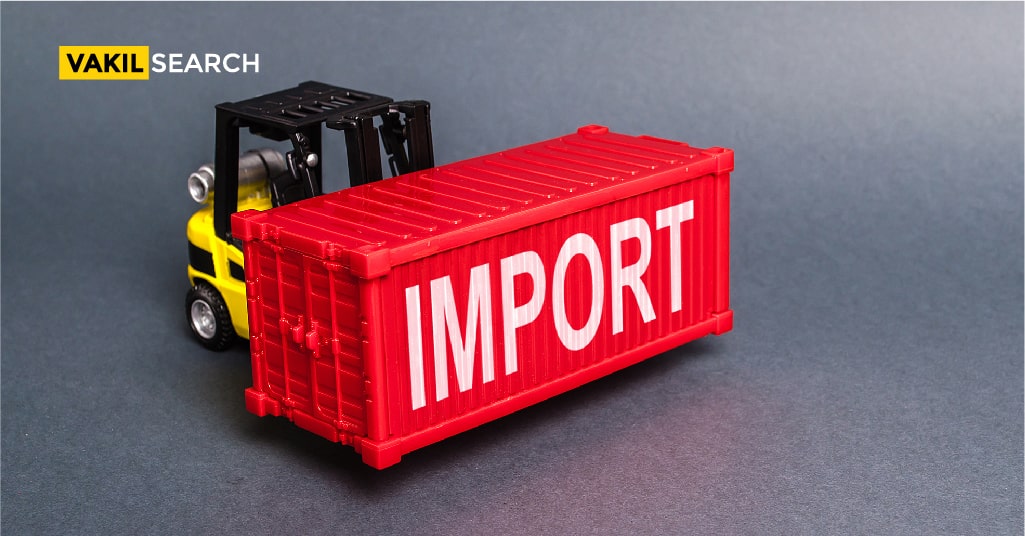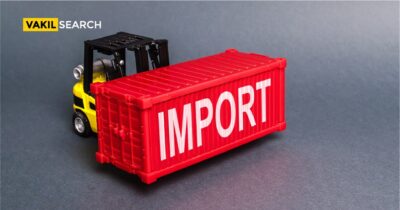Explore the complexities of Importer-Exporter Code (IEC) with a focus on exempted categories and restricted items. In this blog, our experts provide insights into the regulations shaping international trade in India.
Overview – IEC Code
Embarking on the journey of international trade, whether as an individual or a business entity, requires navigating through a maze of regulations and requirements. One essential aspect that stands as a gateway to this global marketplace is the Import Export Code (IEC). In this comprehensive guide, we will unravel the significance of the IEC, and explore its issuance, exemptions andrestrictions to understand the intricacies of the import-export procedure.
Understanding the Import Export Code (IEC)
The Import Export Code is more than just a set of ten digits; it is the lifeline for those involved in international trade to and from India. Without this code, individuals and businesses cannot harness the benefits of export schemes, execute international transactions through financial institutions, or smoothly clear customs for imported goods. The IEC plays a pivotal role in resource balancing across countries and contributes to the growth of national economies.
Who Issues the IEC Code?
The authority responsible for issuing the Import Export Code is the office of the Director General of Foreign Trade (DGFT), under the Ministry of Commerce and Industries, Government of India. The process involves submitting an ‘Import Export License online application,’ along with the necessary documents and the prescribed fee. Additionally, a digital signature is required to file the application online. Once issued, the IEC Code boasts lifelong validity, eliminating the need for renewal. It covers all units, divisions, or factories and is unique to one PAN (Permanent Account Number).
Exempted Categories:
While the Import Export Code is a prerequisite for most international trade activities, certain categories are exempted. These include:
- Import/export of goods for personal use.
- Import/Export by Government and notified charitable organizations.
- Import/Export of goods to and from Nepal or Myanmar, where CIF value does not exceed Rs. 25000.
- Exclusion of Technology and services if the equipment does not fall on the restricted list.
Understanding these exemptions is crucial for individuals and organizations engaging in international trade.
Restricted, Canalized, Prohibited Items: Navigating Regulatory Terrain
In the complex landscape of international trade, certain items are subject to restrictions, canalization, or outright prohibition. Restricted items, as classified in the ITC (HS), can only be imported after obtaining an import license from the relevant Regional Licensing authority.
Canalized items, such as petroleum products and bulk agricultural products, can only be imported through designated Canalizing Agencies. Items listed in ITC (HS) under the category of prohibited goods are strictly forbidden on all import channels in India.
Export Dynamics: Managing Restrictions and Bans
Exporting goods with restrictions involves obtaining a license with explicit permission. The exporter must strictly adhere to the procedures outlined in the permit for the export of such products. A complete ban exists on the export of prohibited goods, including wild animals and animal articles. Certain items can only be exported through state trading enterprises, as specified in the EXIM policy. The DGFT grants licenses, certificates, or permissions for the export of goods in these categories, often seeking advice from representatives of relevant technical authorities and ministries.
Import and Export Procedure: Everything You Need to Know
For individuals and businesses venturing into international trade, obtaining an Import Export code is the first and foremost requirement. The subsequent export procedure involves submitting a set of documents, including
- Proforma Invoice/ Commercial Invoice
- Sale-purchase contract
- Non- Disclosure Agreement (NDA)
- Packing list (PL)
- Bill of lading/ Airway bill (title to the goods)
- Certificate of origin
Relevant regulatory documents, such as GST returns/refund forms, exchange control declarations, bank realization certificates, and Registration cum Membership Certificates (RCMC), are crucial for availing export benefits.
| The regulatory authority overseeing imports and exports in India is the Foreign Trade (Development and Regulation) Act, 1992, while the international trade policy (2015-20) outlines the current provisions governing exports and imports. |
Imports: Key Regulatory Provisions
- Goods imported into India must comply with Section 11 of the Customs Act, Foreign Trade (Development and Regulation) Act, and the Foreign Trade Policy 2015-20.
- Certain prohibited, restricted, and canalized items require additional permissions and licenses from DGFT and the government.
- Identification under the Indian Trading Classification based on a harmonized system (ITC {HS}) is necessary to understand the regulations applicable to those goods.
- Applicable duties for imports include customs duty (as per the Customs Tariff Act, 1975), anti-dumping duties, safeguard duties, social welfare surcharge, and Integrated Goods and Services Tax (IGST).
The Takeaway
In essence, compliance with the prescribed import and export procedure is crucial for a hassle-free experience in obtaining and utilizing the IEC Code. Clear guidelines laid down in various applicable acts must be strictly adhered to, as non-compliance can lead to avoidable complications. In such circumstances, the cargo may get stuck at the port of the other country, attracting demurrage charges.
To know more about IEC, request a callback from our experts right away!
Frequently Asked Questions – Import Export Code
The Importer Exporter Code (IEC) is a unique 10-digit alpha-numeric code issued by the Directorate General of Foreign Trade (DGFT) in India. It is mandatory for any person or company engaged in import and export activities.
Here are some frequently asked questions about IEC:
What is IEC?
IEC or Importer Exporter Code is a unique 10-digit alpha numeric code issued on the basis of PAN of an entity.
How to apply for an IEC?
An IEC application can be made manually as well as online.
Is IEC required for import or export of goods for personal use?
IEC is mandatory only for business and commercial purposes. There is no need for IEC to import or export goods for personal use.
Do we need to take a different IEC number for export and import activities?
The same IEC can be used for import and export activities.
Is IEC only required for goods?
IEC is necessary for executing international transactions. It is not only required for goods but for all import and export activities.










